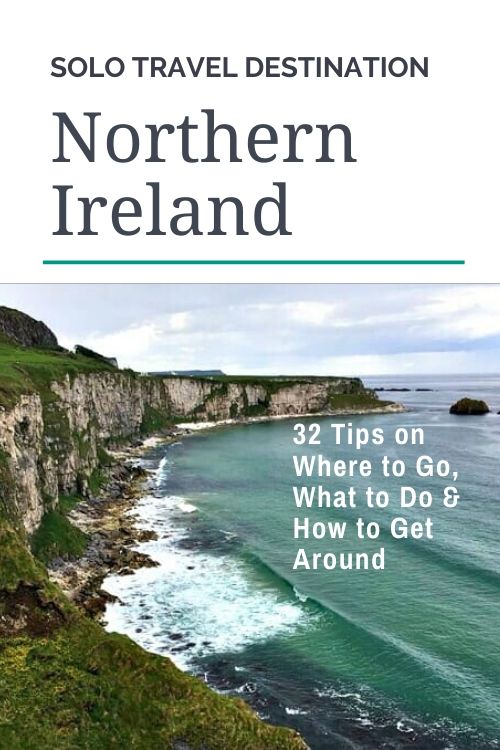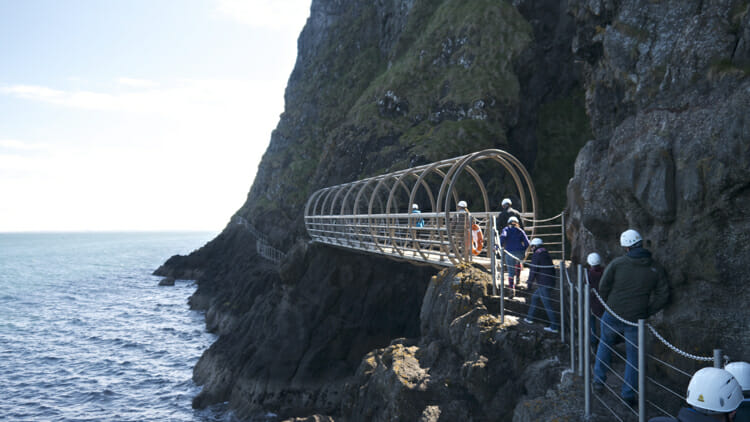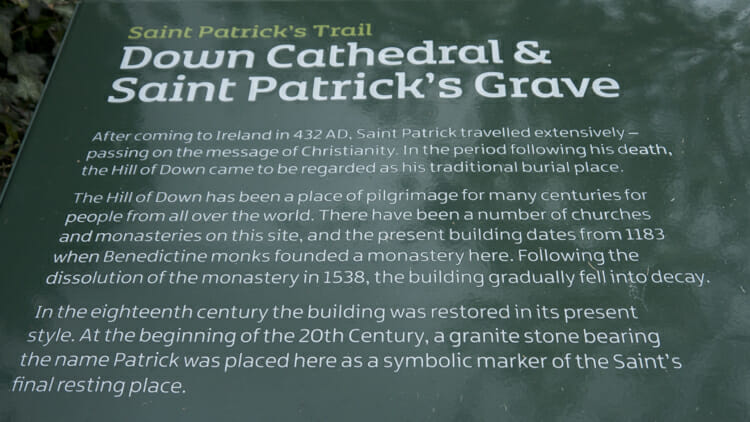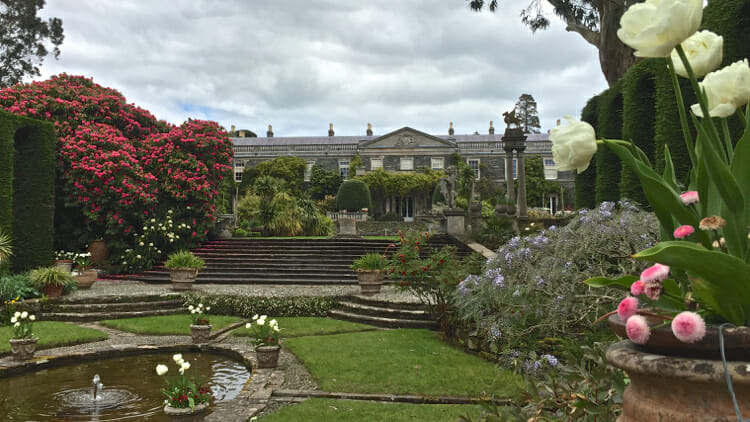
Belfast, and all of Northern Ireland, are great solo travel destinations.
I may be a little partial. In my family, one grandmother and two great grandparents emigrated from Northern Ireland.
The landscape, the accent, and aspects of the culture are bred in my bones.
I’m not long there before I start to turn my phrases putting the subject at the end and an ach at the beginning. “Ach, it’s a grand place Derry is.” Is that sentence structure unusual just to my ears? Are there any accent/grammar knowledgeable readers willing to help me on this?
But you don’t need a connection with Northern Ireland to fall in love with it. From Belfast to Derry, from the loughs (lakes or bays) to the glens, from fables to festivals, there is a lot to do, see, and enjoy in Northern Ireland. Here are my tips. Many of them work for the budget traveler.

A Very Brief History of Belfast's Troubles
The history of Northern Ireland is a most complicated one and goes back centuries so I'm taking a risk summarizing it here. But, for those going for the first time, I thought this would be valuable. Here is a very simplified summary of the last decades of the twentieth century, the effects of which can still be felt still today.

Irish Catholic Nationalists and Protestant Unionists were at war from the 1970s to the 90s, though the time period was simply called The Troubles. Over 3,600 people died during this period and thousands more were injured. In 1969, the first Peace Wall went up as a means of keeping a distance between the Catholics living in the west and the Protestants (who considered themselves British) in the east. It was along the Falls Road and Shankill Road, which were/are defining borders between Catholics and Protestants (respectively), where much of the violence during the Troubles in Belfast took place.
After a number of cease fires in the 90s, the 1998 Good Friday Agreement was finalized. It was drawn up between the British and Irish governments and most of the political parties in Northern Ireland and defined how Northern Ireland should be governed .
The streets of Belfast are now calm with the exception of some great party areas. Though some tensions between the two groups remain, I've been told by locals that the division is driven by politicians more than the people. This is especially true of the younger generation and is somewhat reflected in the 2011 census in which citizens were given an opportunity to declare their nationality as Northern Irish for the first time. The results were interesting with 21% of the population considering themselves Northern Irish exclusively rather than Irish or British. This could be interpreted as placing themselves in neither the nationalist nor the unionist camps.
- British only – 40%
- Irish only – 25%
- Northern Irish only – 21%
- British and Northern Irish only – 6%
- Irish and Northern Irish only – 1%

 The Son of Protagoras by MTO, a French street artist. Protagoras was a Greek Sophist who influenced contemporary thought on moral and political questions.
The Son of Protagoras by MTO, a French street artist. Protagoras was a Greek Sophist who influenced contemporary thought on moral and political questions.The Best Free Things to Do in Belfast
- Belfast's murals and street art. Street art and murals are a passive way to demonstrate the politics of a people. This is certainly the case in Belfast. The Peace Walls and many buildings are covered with important art often produced by very skilled artists. There are some great walking tours of the city's street art to take in. The Black Cab Tours are famous for showing off the murals.
- Belfast City Hall. In the center of Belfast is the grand city hall. They run free tours seven days a week, three times each day, four on Saturday and Sunday.
- Experience the Titanic. The Titanic sailed from Southampton but was built in Belfast. Outside Belfast City Hall is the Titanic Memorial Garden. Within walking distance, on the waterfront is the Titanic Museum.
- Linen Hall Library. Across from Belfast City Hall is the Linen Hall Library that dates back to 1788 and is the oldest library in Belfast. It’s known for its historical collection including a comprehensive archive of the Troubles. Look for the wall along the staircase near the back for a fabulous display of political posters from the last quarter of the 20th century.

- Explore the Linen Quarter. Belfast was once known as Linenopolis as it was a world leader in the production of linen. This is now a great area for dining and pub hopping. Don’t miss The Crown Bar. It’s owned by the National Trust which speaks to its historical significance. It still has gas lighting and cozy snugs. Have a pint if you want. Regardless, definitely go.
- The Europa Hotel. Across the street from The Crown Bar is the Europa Hotel, known as the most bombed hotel in the world. It was bombed 28 times during the Troubles. Walk up the staircase to see photos of the history of the hotel. The hotel manager, Harper Brown is legendary. I was told how he once took a bomb out of the hotel and chased the IRA down the street with it in hand. It was described by someone online slightly differently: “On one occasion the IRA left a bomb in the hotel. Harper wasn’t going to stand for that type of carry on so he picked it up and carried it out to the car park. The lads noticed this and returned the bomb to the hotel. Harper thought to himself, ‘No bomb’s going to sit inside the Europa’ and once again carried it out to the car park. The lads from the IRA gave up at that stage.”
- Enjoy the Cathedral Quarter. This area, which once served the shipbuilding and linen industries, fell into decline during the 20th century but has been experiencing a revitalization over the past couple of decades. There are some great pubs, arts organizations, and, of course, street art.
- The Oh Yeah Music Centre. The Oh Yeah Music Centre is a rehearsal and performance space, but it also has both an exhibition on the story of music from NI and a cafe. They have a free, weekly Open Mic night. They also offer a music tour of Belfast for £8 and have regular concerts.
- Ulster Museum. Located in the Botanic Gardens of Belfast, the Ulster Museum is home to a rich collection of art, historical artifacts, and natural science exhibits. It’s free to all visitors.
- St. George’s Market. This is a great indoor market in Belfast, open Friday, Saturday, and Sunday offering local produce and crafts. Try a Belfast Bap, which is just about every kind of fried meat you can think of on a bun.
- The Ulster-Scots. Why is the Irish accent in the north so different from that in the south? It’s because of the Scottish influence resulting from the Plantation of Ulster that began in 1606. To get an appreciation of the Ulster-Scots tradition, history, language and culture, visit the free Ulster-Scots Community Network in Belfast. You can also check out the Ulster-Scots Agency.
- Belfast Castle Estate. Up on Cave Hill is Belfast Castle with great views of Belfast Lough and the city.

Solo Travel Northern Ireland: Exploring Beyond Belfast

Explore the Causeway Coastal Route
This route covers 120 miles along the coast from Belfast Lough to Lough Foyle – basically, Belfast to Derry. There are some inland deviation routes to explore the Glens of Antrim which will take your breath away. A few of the route’s highlights have a fee but a National Trust Card will help with some of them. The top highlights are the Giant’s Causeway and The Gobbins. From Belfast running north to Derry, here are a few stops you’ll want to make.
- Carrickfergus. This is a very small town north of Belfast with a thousand year old castle. I would focus my time there on the church, St Nicholas’ Church of Ireland. It’s not huge but has a fascinating history.
- Whitehead. Pop into Whitehead for a view of a town created by the railway to get people using the train on the weekends. This is a particularly great spot if you’re into steam engines.
- The Gobbins. A recently opened guided cliff-edge walk. Read Of Gobbins and Giants for all the details.

- Glenariff Waterfalls & Forest Park. Look for the walking trails here in one of the nine Glens of Antrim. Glenariff is known as the Queen of the Glens for being, in many people’s opinion, the most beautiful of the nine Glens of Antrim. There’s a charge for parking but not for entering the park.
- Carrick-a-Rede Rope Bridge Enjoy a little bit of adventure as you walk to the point along the Carrick-a-Rede Rope Bridge that was originally built in 1755.
- Ballintoy Harbour. This is one of the shooting locations for Game of Thrones. You can see all locations here.
- The Giant’s Causeway. One cannot go to Northern Ireland without seeing the Giant’s Causeway. It’s remarkable in terms of its structure, scale, and mythology. Read Of Gobbins and Giants for all the details.
- Old Bushmill’s Distillery. The Distillery is 2.5 miles from the Giant’s Causeway. They make wonderful whiskey. They offer tours and tastings.
- Dunluce Castel. This is a medieval castle ruin. You can pay to go inside. It’s absolutely worth the stop but unless you love castle ruins, I’d appreciate the castle from the grounds.
- Go to the beach. It’s an island so, yes, there are beaches. Tucked away between Dunluce Castle and Portrush is Whiterocks Coastal Park.

What to Do in Derry
Londonderry is rarely called by its full name. It’s commonly know as Derry as well as Stroke City for the fact that it is often published as Derry/Londonderry. Like Belfast, it was the site of intense action during the Troubles. The Bogside of Derry, a predominantly Catholic neighborhood, was the setting for key events in Irish history and the struggle for Civil Rights including The Battle of the Bogside, Bloody Sunday, and events surrounding The Hunger Strike. To get an understanding of the city’s history take in some of these attractions.
- The Tower Museum. It offers a fabulous presentation of the Story of Derry. This will lay a foundation for your understanding of the city. £4 for an adult.
- Guided Walk around the Walled City. With some knowledge of Derry’s history from the Tower Museum you can now take the walking tour. Hearing the history within its geography helps make everything more clear. £4.
- The Museum of Free Derry. 1968 to 1972 was a particularly violent period in the history of Derry. The Museum of Free Derry was opened in 2007, funded by the Bloody Sunday Trust to tell the story of ‘Free Derry,’ and including the civil rights era, Battle of the Bogside, Internment, Bloody Sunday, and Operation Motorman.
- The People’s Gallery on the Bogside. Take a tour of 12 political murals on the Bogside. The tour is delivered by one of the Bogside artists and costs £5.
- Guildhall. The building dates back to 1914 though the guilds date back much farther. Admission is free to temporary exhibits.
- City Market. The Walled City Market. It is held in front of the Guildhall on the first Saturday of the month.


More Things to Do in Northern Ireland

- St. Patrick’s Way Pilgrim Route. This 82-mile pilgrim walk starts in Armagh. St. Patrick’s Way is a signed walking trail connecting key sites relating to Saint Patrick and Christian Heritage. It covers spectacular landscapes ending at Saint Patrick’s final resting place in the grounds of Down Cathedral in Downpatrick.
- Irish Linen Centre. Before you start questioning a museum about linen, take pause and consider two things: the economic implications of this commodity; and, what had me wildly surprised, the technology that went into linen making at the turn of the 20th century. It was akin to computer punch cards that were commonly used well into the 1980’s (see photo). I found it fascinating. It’s free and located in Lisburn.
- Ulster American Folk Park. Located in Omagh, County Tyrone, the Ulster American Folk Park celebrates the migration of the Ulster Scots to the United States. It’s an outdoor museum that tracks the lifestyle of emigrants from Northern Ireland, their passage on ships to America, and the lives they had there. The park is heavily supported by the Mellon family. The parents of Thomas Mellon, founder of the Mellon Bank, originated from the area. The Mellon Centre for Migration Studies is located adjacent to the visitor centre. £9 for adults.
- Festivals and music. Take in a live performance. Go to a festival. Click here for music in Northern Ireland as a whole and check out the tourism board’s site for all events. For the Belfast music scene go to Belfast Live. For Derry’s scene, see the Derry Live List.
- Mourne Mountains. Located in County Down near the border of the Republic of Ireland, the Mourne Mountains are quite different from Antrim’s Glens but equally spectacular. Hiking, mountain biking, exploring seaside towns with great food–there's lots to do there.

Getting To and Around Northern Ireland
- iLink Card. iLink is a smartcard that you can top up with daily, weekly, or monthly travel options. From the iLink site: “If you travel by bus and train within specified zones, using iLink could be better value for money than buying separate bus and train tickets. Check out the prices to see if iLink suits you.”
- Trains: As you can see from the map, the trains in Northern Ireland cover a lot of territory. They run special offers according to the season.
- Buses: You have a few bus options.
- Goldline: Goldline buses are for traveling between major cities.
- Ulsterbus. To poke about you’ll want the Ulsterbus. They have a journey planner to help you sort out your travel plans. I’d suggest the Rambler service.
- Rambler Day Ticket. Translink’s Summer Bus Rambler Day Ticket gives you a hop-on, hop-off kind of service that allows you to explore Northern Ireland’s most spectacular scenic areas with unlimited travel on Ulsterbus, Goldline, and Metro. Services Monday – Sunday after 9:15 am.
- Planes: From my research, the only direct flight to Belfast from North America is from New York City. Flying direct to Dublin is much easier. Rather than take an indirect flight to Belfast, I’d be inclined to take a direct flight to Dublin and take the train to Belfast buying online 72 hours in advance. That way you can spend time in Dublin if you want and enjoy the wonderful scenery as you travel to Belfast on the train.

Get a National Trust Card
This is for those who live outside the UK. Purchase a 7 or 14-day pass and enjoy free entry to over 300 historic houses and gardens in England, Wales, and Northern Ireland from only £38.00 for 7 days. This will get you into 28 places in Northern Ireland including:
- Carrick-a-Rede Rope Bridge A little bit of adventure on the Causeway Coastal Route.
- Giant’s Causeway. This is a must. Read above about the Causeway Coastal Route.
- Mount Stewart If you love history or gardens, this is a destination for you. The gardens were planted by Edith, Lady Londonderry, and involve a series of outdoor rooms and parterres with many rare plants. It recently had an £8 million restoration. There’s a lovely tea shop there too.
- Mussenden and Downhill Mussenden Temple is a small circular building built in 1785 located on cliffs near Castlerock in County Londonderry.
I was fortunate to be on this trip as a guest of Tourism Ireland and Tourism Northern Ireland. Naturally, the opinions and experiences are my own.
